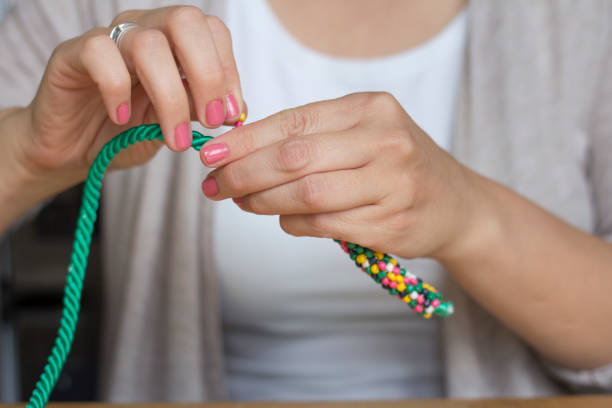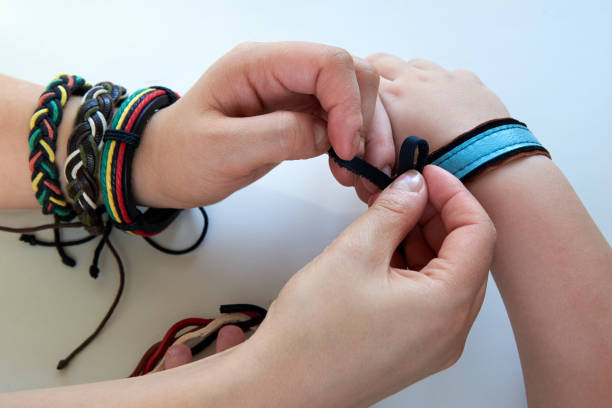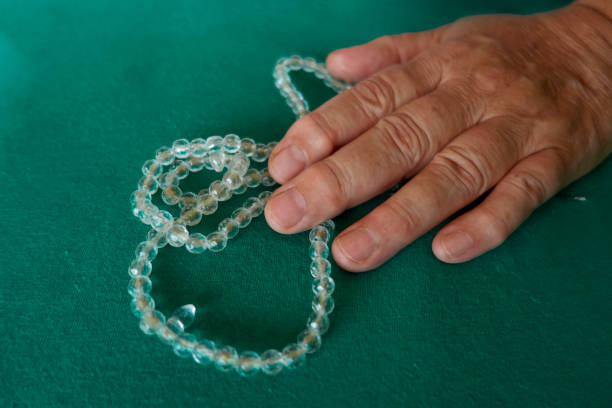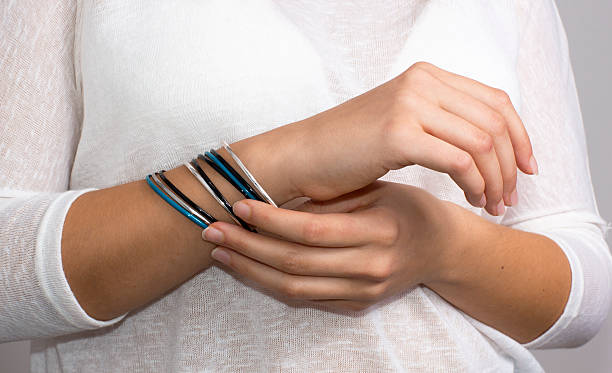How to tie a bracelet so it won’t come off
Introduction to Bracelet Tying Techniques
When it comes to bracelet tying, understanding the purpose of the bracelet should be your starting point. For example, friendship bracelets, typically made with embroidery floss and intended to be semi-permanent, may not require a knot that’s easily undone. In contrast, adjustable bracelets intended for daily wear might also benefit from a sliding knotting mechanism that allows for easy removal. Before you begin, ensure you have all the necessary supplies—string or cord, scissors, and any beads or charms you plan to include.
Preparation is key in jewelry making. Measure the cord or string, taking into account the extra length needed for knotting, and cut it to size. Remember to choose a comfortable length considering it won’t be coming loose often. If you’re making a bracelet for someone else, measure their wrist first to ensure a perfect fit.

Choosing the Right Knot for Your Bracelet
Selecting the appropriate knot is crucial for the longevity and security of your bracelet. A well-secured knot does not only prevent your bracelet from unintended release but could also add an aesthetic value to the piece. Here’s a brief overview of two reliable knots:
- The Surgeon’s Knot: Ideal for beaded or stretch bracelets, as it’s designed to handle tension without becoming loose.
- The Sliding Knot: A versatile and adjustable option, perfect for bracelets that may need to fit over the hand and sit snuggly on the wrist.
For those interested in a sliding knot, here are the steps to create a secure and adjustable closure:
- Begin with your cord folded in half, to form two braids. Where the loop end meets the two loose ends should be where your sliding knot will sit.
- Place one end over the other, then pulling it through the created loop.
- Tighten the first part of the knot by bringing the ends together firmly.
- Take the other end and wrap it around both braids twice, near the first half of the knot.
- Pull the end through the loops you’ve just created, effectively sandwiching the two braids.
- Tighten by pulling both ends together while ensuring the knots are snug against each other.
Advanced Tips for Enhancing Bracelet Security
To further reinforce your bracelet’s security, consider the following techniques that add an extra layer of durability:
- Double up on knots in crucial areas, especially if the string material is slick and prone to coming undone.
- Utilize a dab of clear nail polish or glue on the knot to ensure it stays intact. Be mindful to let it dry completely before wearing the bracelet.
Moreover, the materials and tools you choose will play a significant role in the security of your bracelet. When selecting a string or cord, take into account not only the color and texture but also the strength and flexibility. Nylon or coated cotton threads are often recommended for their mix of comfort and durability.

Common Mistakes to Avoid When Tying Bracelets
As you embark on your jewelry-making journey, be wary of these common pitfalls:
Mistake #1: Poor Knot Selection
Not all knots are created equal, and some simply aren’t suited for the task at hand. Making sure to choose the right kind of knot is vital.
Mistake #2: Overlooking Bracelet Maintenance
Bracelets that are worn frequently will require occasional tightening and cleaning to maintain their integrity. Ignoring these steps can lead to a bracelet that may not withstand the test of time.
| Common Knots | Attributes | Best for |
|---|---|---|
| Surgeon’s Knot | Secure, non-slip, easy to tie | Stretch Bracelets |
| Sliding Knot | Adjustable, versatile, relatively easy to tie | Adjustable Bracelets |
| Square Knot | Simple, classic, may come loose without reinforcement | Casual wear Bracelets |
| Fisherman’s Knot | Very secure, complex, holds under tension | Active/lifestyle Bracelets |
Ensuring Your Bracelet Remains Fastened
Even with a well-selected knot and careful preparation, sometimes a bracelet can still come loose. To ensure your bracelet remains fastened, it’s important to put into practice a bit of extra care and maintenance. Begin by regularly checking the knot’s tightness, especially after activities that may cause strain on the bracelet. Adjusting the tension can often be accomplished simply by gently tugging the ends in opposite directions to tighten the sliding knot or by retying a weakened surgeon’s knot.
For those who participate in activities that could potentially damage their bracelets, such as sports or swimming, it may be a good idea to remove the bracelet beforehand. While many knots are designed to hold under tension, repeated exposure to harsh conditions can weaken the material and, subsequently, the knot itself. For this reason, being proactive about when to wear your bracelet can significantly extend its lifespan and reduce the chances of it coming undone.

Conclusion: Ensuring Your Bracelet Remains Fastened
In crafting bracelets that won’t come off, attention to detail in the knot-tying process, material selection, and ongoing care are all critical. By choosing the right knot, like the surgeon’s or sliding knot, reinforcing it correctly, and avoiding common mistakes, you will keep your bracelet securely in place. Remember that bracelets, like any piece of worn accessory, may require occasional maintenance and adjustments, so keep an eye on them to ensure their longevity.
The joy of wearing a bracelet lies not just in its aesthetic appeal but in its ability to stay with us through our daily adventures without concern. By applying the principles and techniques outlined in this guide, you can tie your bracelets with confidence, knowing that they will remain a constant on your wrist, symbolizing whatever personal significance they hold for you.
FAQs
Q1: What is the best knot to use for a bracelet that frequently comes off?
A1: The best knot for a bracelet that often comes off is the surgeon’s knot, which is known for its secure and non-slip nature. This knot is suitable for most types of bracelets, particularly those made with elastic or stretchy materials.
Q2: Can I use glue to secure the knot on my bracelet, and if so, what kind should I use?
A2: Yes, you can use a small dab of clear glue or clear nail polish to reinforce the knot on your bracelet. Use a strong, jewelry-safe adhesive or superglue designed for use on fabrics or flexible materials for best results.
Q3: How can I make my adjustable bracelet’s knot tighter?
A3: To tighten an adjustable bracelet’s knot, gently pull the ends in opposite directions to increase the tension. If the knot is still not secure enough, you may need to untie it and re-tie using the sliding knot technique, making sure it’s snug and secure.
Q4: How often should I check and maintain my bracelet to prevent it from coming undone?
A4: It is advisable to check the tightness and security of your bracelet’s knot every few times you wear it, especially after engaging in activities that might cause the bracelet to loosen. Periodic maintenance, such as cleaning and knot re-tightening, will also help prevent the bracelet from coming undone.
Q5: What are the signs that a bracelet’s knot is weakening and may come off?
A5: Signs of a weakening knot include noticeable loosening, visible wear or fraying of the material at the knot, and ease of movement of the knot itself. If you notice these signs, it’s best to re-tie the knot or reinforce it before the bracelet comes off.
